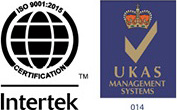UN FIBC Bag Compliance: Strategies for Maintaining Global Standards in Bulk Packaging

Transporting dangerous products or compounds that require special treatment raises the risks significantly. UN FIBC Bags can help in this situation. These bags are developed and produced to fulfill rigorous worldwide standards, ensuring the safe transit of hazardous products across borders.
This article will look at the primary tactics firms can use to comply with UN FIBC bag requirements and ensure their bulk packaging operations meet worldwide safety and regulatory demands.
Key Requirements for UN FIBC Bags
UN FIBC Bags must meet several strict criteria to be durable and reliable for transporting hazardous chemicals. Here are some of the main requirements:
1. Weight and Capacity Limits: UN FIBC bags must meet defined weight capacities based on Safe Working Load (SWL). This guarantees that the bags can withstand the weight of the cargo they transport without ripping or structural breakdown. Typically, the bags are rated based on their strength and capacity to contain dangerous contents without harm.
2. Testing Protocols: To ensure compliance, UN FIBC bags go through a series of tests that imitate real-world situations. Some of the important tests are:
- Stacking Test: Determines if the bag can support the weight of additional bags when stacked for storage or travel.
- Drop Test: Determines the bag’s ability to resist a drop from a certain height without rupturing.
- Topple Test: Determines whether the bag remains stable or topples when subjected to lateral pressures.
- Righting Test: Determines how the bag reacts when tipped over and if it can be uprighted without harm.
- Tear Test: Determines the resistance of the bag’s material to ripping under pressure.
- Vibration Test: Simulates the vibrations that occur during transportation to confirm that the material within is intact and safe.
3. Labeling Requirements: Each UN FIBC Bag must have crucial safety and regulatory information. This comprises symbols, danger categorization codes, and details about the compounds being carried. Proper labeling ensures that all stakeholders in the supply chain are informed of the contents and any possible hazards connected with handling or transportation.
4. Traceability and Documentation: UN-compliant FIBC bags must arrive with suitable documentation, such as certifications of conformity and test results. This certification proves that the bags satisfy international safety requirements and ensure traceability throughout the supply chain.
Strategies to Maintain Compliance in Manufacturing
Ensuring that FIBC bags are made to UN standards necessitates meticulous planning and stringent quality control throughout the manufacturing process. Here are some significant measures producers may employ to be compliant:
1. Material Selection
Choosing the appropriate materials is the cornerstone of compliance. The materials used in UN FIBC bags must be able to survive extreme circumstances such as sunshine, temperature variations, and rigorous handling. High-quality woven polypropylene is the chosen material because of its strength, flexibility, and tear resistance. Additionally, UV protection coatings are frequently applied to the material to prevent deterioration during outdoor storage and transportation.
2. Quality Control
Rigorous quality control techniques are required to verify that each batch of FIBC bags fulfills UN specifications. This involves routine inspections, both during and after the production process, to detect any possible flaws. Manufacturers should have on-site testing facilities to undertake a variety of tests, including the previously stated drop, tear, and vibration tests. Continuous monitoring ensures that bags leaving the production are safe, dependable, and meet worldwide standards.
3. Certifications
UN FIBC bags must meet many regulatory criteria, including those established by the United Nations and ISO. Manufacturers must guarantee that their production procedures comply with these criteria and that each bag is correctly certified. Certification entails submitting the bags to a recognized testing institution for the necessary performance tests. Only after passing these tests will the bags be awarded the appropriate approvals for global transportation of hazardous chemicals.
4. Design Innovations
Although compliance is crucial, producers must also prioritize innovation to enhance the functioning of FIBC bags. Specialized liners, several lifting loops, and tailored closing mechanisms all help to improve the bag’s safety and functionality. For example, adding inner liners to the bags can help protect delicate components from moisture, contamination, and leakage. These improvements not only improve safety but also allow businesses to address unique industrial demands while adhering to UN regulations.
5. Ensuring compliance During Usage and Transportation
Manufacturing certified FIBC bags is only one aspect of the puzzle. Maintaining compliance when using and transporting these bags is equally crucial. Mishandling, incorrect storage, and insufficient loading techniques can all jeopardize the integrity of the bags, posing serious safety risks. Here are a few excellent practices to follow:
6. Proper Handling and Transportation
A UN FIBC Bag’s structural stability depends on careful handling. Workers should be taught proper lifting practices, particularly when dealing with dangerous products. FIBC bags should be loaded and unloaded using mechanical lifting equipment, such as forklifts, to minimize damage during physical handling.
7. Correct Filling and Stacking
It is critical to ensure that FIBC bags are filled to the required capacity. Overfilling might rip or break the bag, whilst underfilling can create instability during transportation. Furthermore, suitable stacking techniques must be used while storing FIBC bags to avoid them tipping over or getting damaged under pressure.
8. Training for Safe Use
Ensuring that staff are properly trained in the handling and usage of FIBC bags is critical for maintaining compliance. Training programs should include filling, sealing, lifting, and carrying the bags. Workers should also be trained on the necessity of following safety standards while working with hazardous products, as well as how to recognize possible problems, such as wear and tear on bags.
Selecting the Right UN FIBC Bag Supplier
One of the most important aspects of ensuring compliance is choosing the proper provider for your UN FIBC bags. A dependable provider will deliver high-quality, certified items that fulfill international and regional safety regulations. Here are the essential considerations to consider while choosing a supplier:
- Certifications: Ensure that the supplier’s items have the required UN certifications and fulfill ISO standards.
- Quality Assurance: The supplier should have a strong quality control system in place, including frequent testing and inspection of the bags.
- Customization: Select a provider that can tailor FIBC bags to match your company’s particular requirements while conforming to UN regulations.
- Reputation and Reliability: Choose a provider with a track record of providing compliance, and durable items on schedule.
Conclusion
In the complicated world of bulk packaging, achieving compliance with worldwide standards is critical to the safe transportation of hazardous products. UN FIBC bag compliance provides businesses with peace of mind, ensuring that their goods are wrapped safely and securely. Companies may guarantee that their FIBC bags fulfill worldwide standards and are safe to transport sensitive products by using the measures indicated above, from material selection to rigorous quality control.
Umasree Texplast, a leading jumbo bag provider, offers high-quality, UN-certified FIBC bags that satisfy worldwide safety requirements. Whether you want standard or custom-designed bags, Umasree Texplast has the knowledge and competence to provide safe and compliant bulk packaging solutions for your company.





